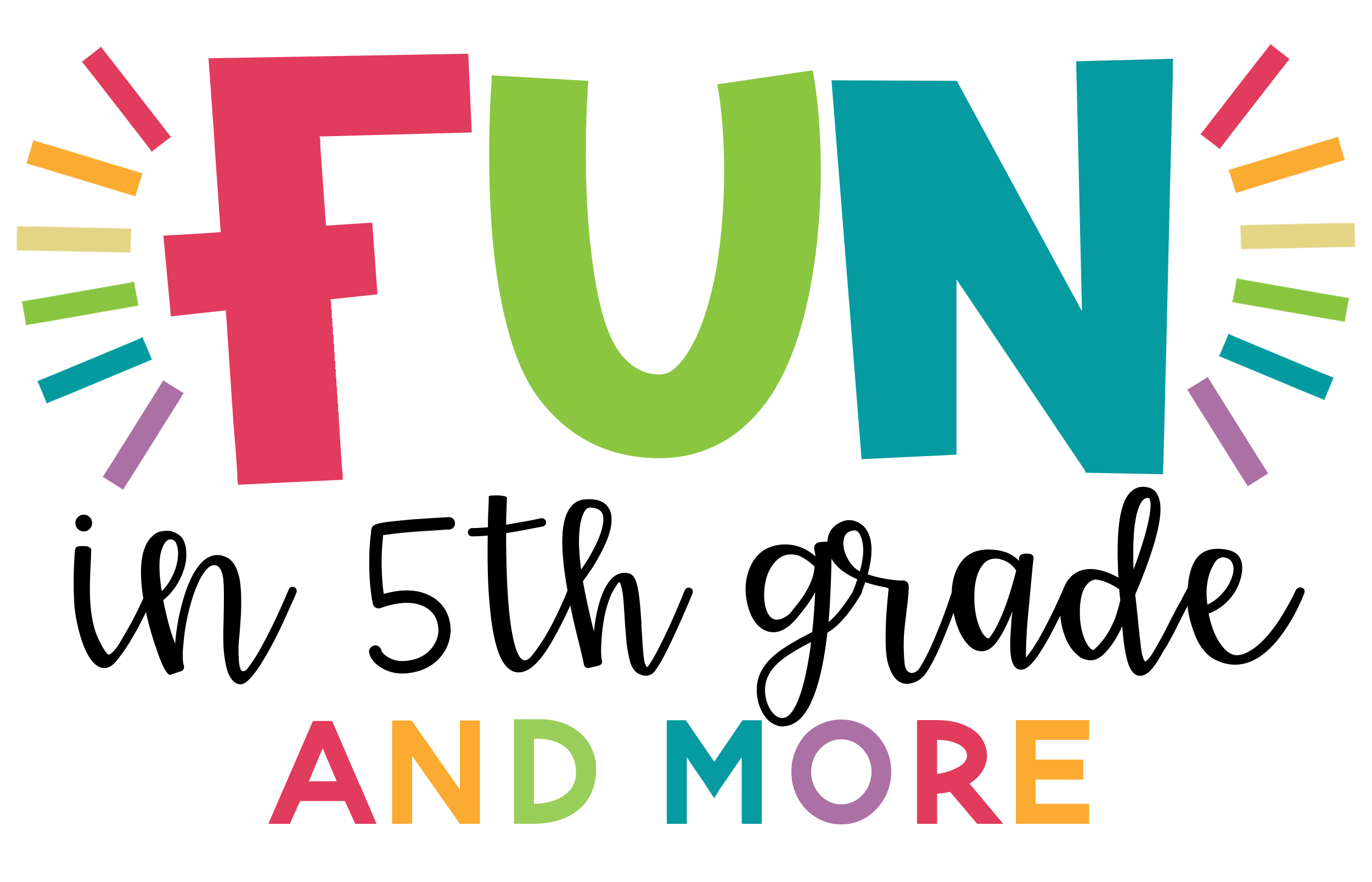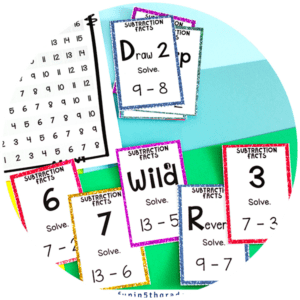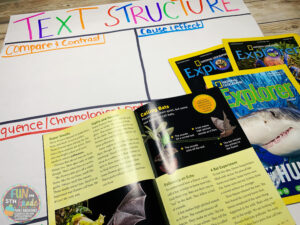Text structure is something my students always seemed to struggle with. We would practice and practice, and they still wouldn’t understand. I finally came to the conclusion that it wasn’t the text they were confused about as much as it was the vocabulary. I quickly realized we needed a little more hands-on practice to make it stick in a way that would be memorable for the students.
Initially, I would spend time introducing and teaching each text structure separately. Then, when we put them all together afterward, students still seemed confused. I switched gears and started introducing and teaching them all at once. There are two reasons I did this. One, I wanted students to be able to distinguish between them when reading new texts, so it wasn’t helpful to teach them separately. Two, I needed more time for them to practice all the different types of text structure, and teaching them separately took up much time.
Introduce
To introduce text structure, I used Flocabulary’s song about text structure. We watched once through and took note of the different text structures. Then, we watched again and added clue words that told us which text structure was used. We displayed some short texts that covered the different types on the Promethean board. Then, together, we decided which text structure it was based on their notes.
Whole Group
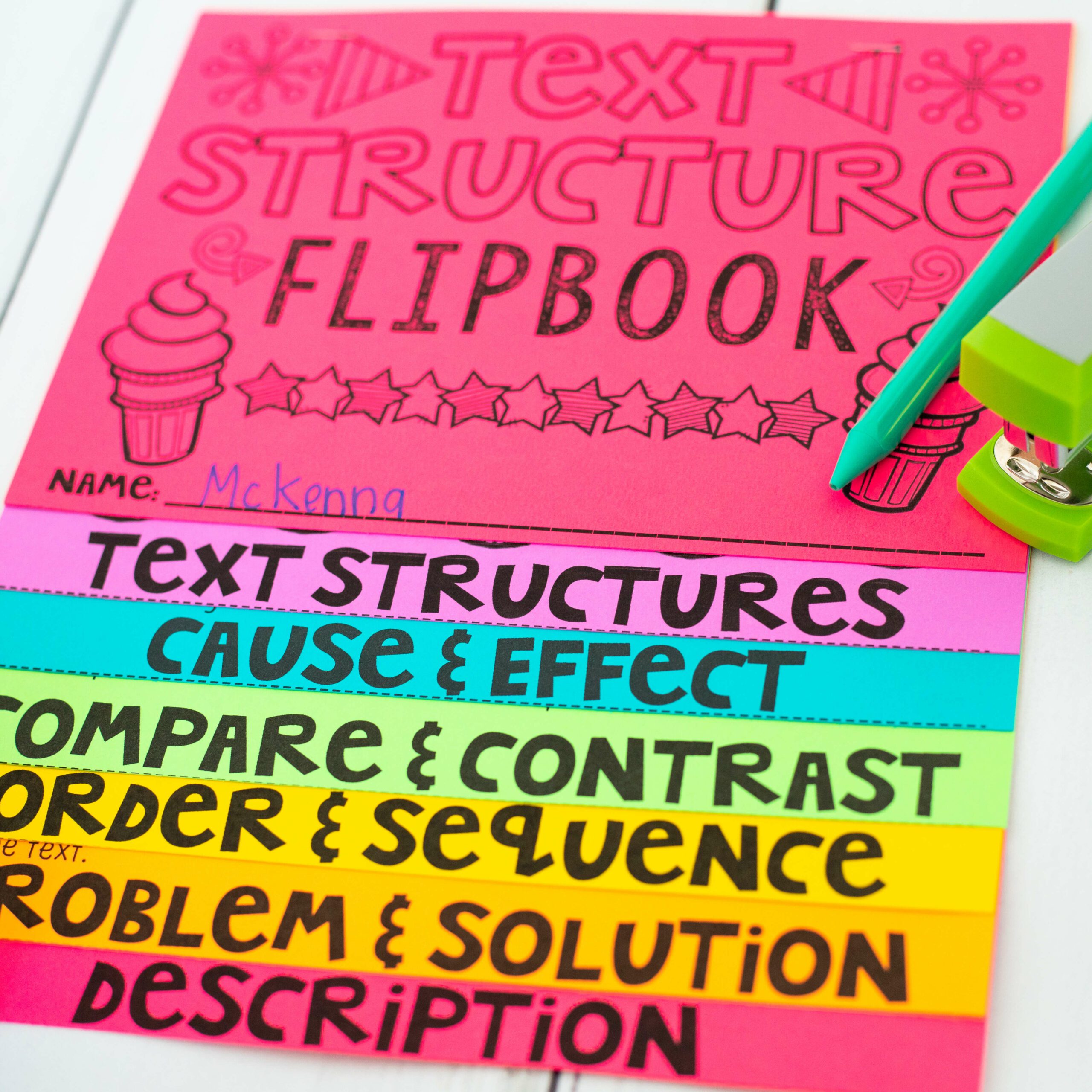
The next day, we made text structure flipbooks to get more practice with the different types of text structures. I display the flipbook on the Promethean board to work through it together. I want the flipbook to be accurate. Once we complete the flipbook, it makes the perfect reference tool for students to use throughout the rest of the year. I love seeing them pull it out when they need a quick refresher.
The flipbook discusses each type of text structure, gives them a place to record their definition, and supplies clue words to look for in the passage. Each page features a different type of text structure with an example passage for students to practice. Each passage is about the same topic, so students can focus on their differences. Students read the passage and highlight or underline the clue words. Then, they add some of the information from the passage to the visual graphic organizer associated with that type of text structure.
You can find the flipbook by clicking here.
Group Work
After we have completed the flipbooks and have a better understanding of text structure, we then break out the markers and make an anchor chart for quick reference during our lessons. We add each type of text structure, clue words, visuals, and definitions. This makes for a great reference tool for everyone as we practice together.
Then, I give each group a couple of magazines I have lying around…Scholastic News, National Geographic, Time for Kids. They also get their own piece of chart paper and markers. Who doesn’t love writing on chart paper with markers?! Students are told to divide the paper and title each section with a different text structure.
They are then instructed to take the magazines, review the articles, and find at least one example of each type of text structure. They cut it out and paste it onto their chart paper. They have highlighters that they use to highlight the clue words that they find indicating which type of text structure it was. They glue it on, then write their rationale for choosing that specific type of text structure underneath it. They love this…it gives them a chance to work in groups with friends and complete a hands-on activity. I like that they have to justify their answers.
Partner Work
At this point, I feel they are ready to work in partners on some text structure task cards. I print a set of text structure task cards for each student or assign them on Google Classroom. Students read the cards and work with their partners to identify the clues and type of text structure for each card. I remind them that before they move on to the next card, they must take turns explaining why they chose that text structure to their partner.
Independent Practice
The following day, we practiced individually to see which students were still struggling with the concept. We usually do some of this in small groups. I’ve also used text structure task cards and printed or assigned them on Google Classroom. I have students read the cards, highlight clue words, and then decide what type of text structure it is. It’s nice starting with smaller paragraphs before moving on to more extensive passages.
Once I feel confident they grasp the different types of text structure, we move on to more significant passages. We also discuss text structure whenever we read in class together. Over the following months, I incorporated many passages using different text structures. I love using these close reading passages with mystery grid pictures! They are great for close reading practice, and the passages are a mix of different text structures. I pick and choose from the different sets of close reading passages to find a variety of text structures to practice. The kids love them because of the mystery grids and high-interest passages. I love them because of the great ELA practice in them! Click here to check out all the different sets I have available in my shop.
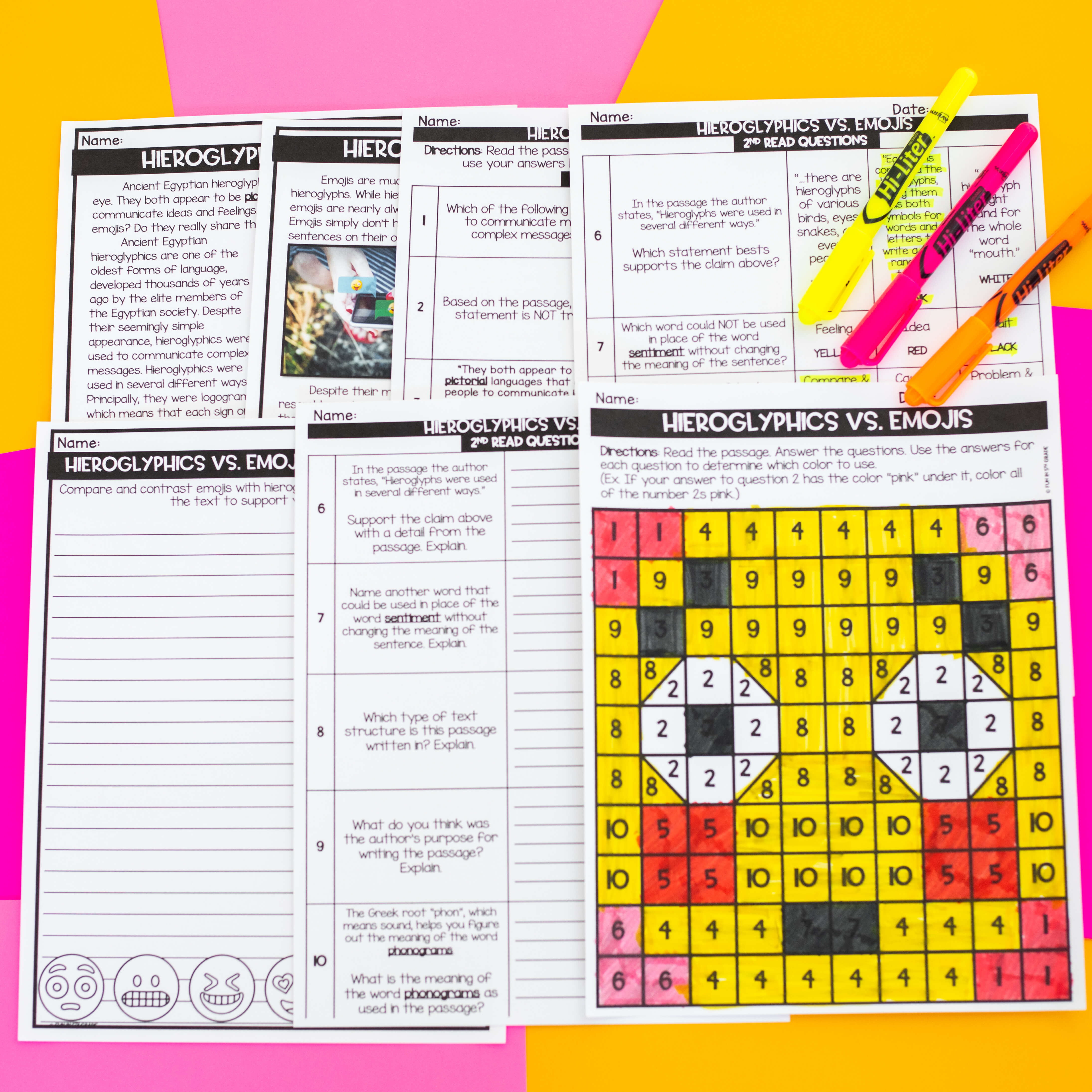
Review
After I teach them about text structure, I like to spiral the concept all year. Not only do we talk about it with every nonfiction text, but we also play review games to help us keep the vocabulary and the concepts fresh. For this, I use Text Structure U-Know, a fun review game found in my shop, in small groups, and for center work. They can also pull the game out if they finish work early. Sometimes, they even take it to recess and/or lunch. That makes my teacher heart so happy. ☺️

The last way we review is through a game show format. It’s a great way to refresh the concept and the students BEG to play. All I have to do is display it on the Promethean board, and they bounce out of their seats. We play in groups, but I still have each student practicing and answering individually. How I do this is I give each student their own whiteboard, marker, and eraser. The groups take turns choosing the category and question amount. Once a question is selected and read, the students privately write their answers on their whiteboards. After that, they discuss with their group the answer they chose and come up with a final answer for the group. I teach them explicitly how to do this so they know how to disagree politely, justify their answers, and agree on a final answer. Once they have their final answer, they show it to me using one of the whiteboards. If the group is correct, they get the points. If they are incorrect, they get nothing, but I do not take points away.
